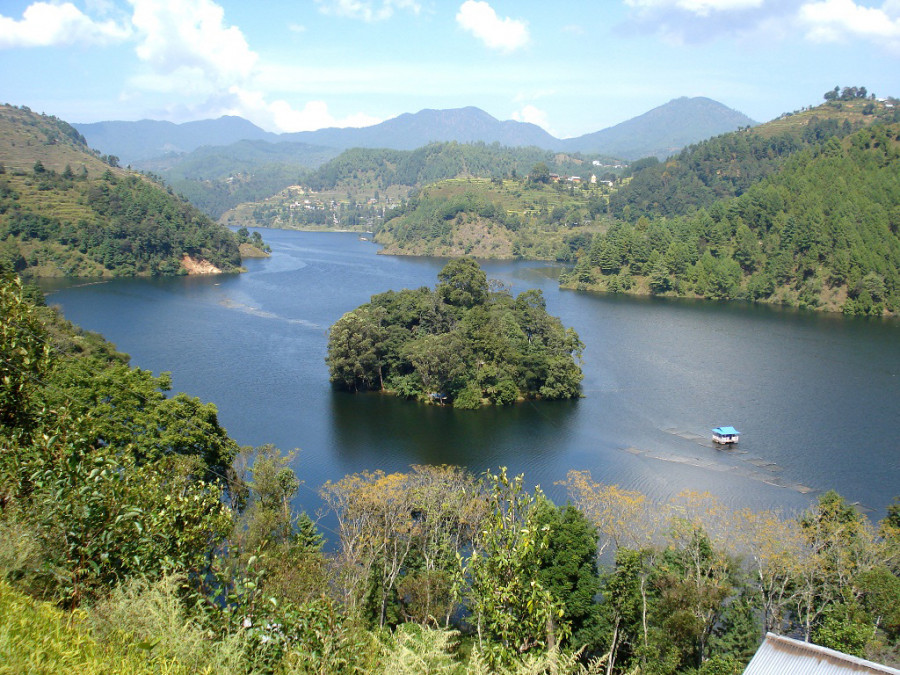Money
Kulekhani III stirs to life after 12 years in development
The 14-megawatt plant can churn out 40.85 gigawatt hours of electricity annually.
Prahlad Rijal
The perpetually under construction Kulekhani III hydropower plant has finally started producing electricity.
The state-owned scheme, which spent 12 years in development, is the last project in the Nepal Electricity Authority's sick list to stir to life. The Nepal Electricity Authority commissioned the 30-megawatt Chameliya Hydropower Project in 2018 and the 60-megawatt Trishuli 3A last May.
The power utility had seen its generation capacity stalled at 531.4 megawatts for over a decade with these projects in limbo when the country was reeling under a severe energy crisis.
Learning a few lessons from these fiascos, the Nepal Electricity Authority announced that upcoming projects in its portfolio would not be built through its direct involvement, but by setting up independent power companies.
According to project chief Subash Mishra, technicians at Kulekhani III have started trial generation and evacuation of energy to the national grid. They are testing its two units with an installed capacity of 7 megawatts each in turn.
“We expect the plant to go full throttle with the final commissioning of both units within 20 days,” Mishra told the Post. “The crew is checking for malfunctioning parts and replacing them. No major issues related to equipment have surfaced during the trial generation.”
The plant which utilises the regulated flow of the Kulekhani reservoir and additional water from Khani Khola in Makwanpur, has fed 1,65,000 units of electricity worth Rs2 million into the national grid over the week since the trial run began.
With this, the installed capacity of the main plant at the Kulekhani reservoir and two of its cascade projects has reached 106 megawatts.
The state-owned power utility usually runs Nepal’s only reservoir scheme and its cascades at full capacity during the dry season to make up for decreased production at its run-of-the-river schemes.
The 14-megawatt Kulekhani III can churn out 40.85 gigawatt hours of electricity annually.
Launched in April 2008, the scheme was initially scheduled to be finished by 2012, but officials could only initiate civil component tests in July 2019.
Work related to civil structures, installation of pylons and cables concluded in September, and the project office has been running tests on civil structures and other electro-mechanical equipment for the past three months.
The project which saw a cost escalation of over Rs2 billion, faced multiple setbacks and missed the deadline for the seventh time owing to dilly-dallying by the Chinese developer Jheijian Jialin Company and the Nepali subcontractor Hulas.
The project was expected to witness a trial run in December 2018. Delays by the contractors hindered commissioning of the plant even nine months after the passing of the sixth deadline.
In May 2014, the National Planning Commission declared Kulekhani III a troubled project after the project’s cost per megawatt ballooned to Rs310 million from Rs173.6 million. The project, which was estimated to cost Rs2.43 billion when it was launched 11 years ago, has cost the power utility Rs4.63 billion.
According to the electricity authority, a half-kilometre-long transmission line has been extended from the powerhouse to connect it with the national grid.
After Kulekhani III goes fully online, 128 MW will be produced from Makwanpur district alone with the three Kulekhani projects generating 106 MW and the Bagmati hydroelectric project pumping out 22 MW.
Water is conveyed to the plant through a 4-kilometre tunnel extending from the 60-megawatt Kulekhani I and the 32-megawatt Kulekhani II.




 15.69°C Kathmandu
15.69°C Kathmandu















